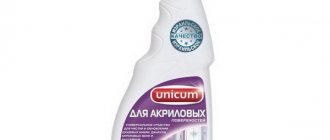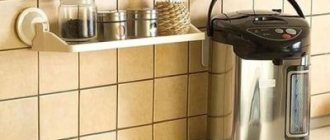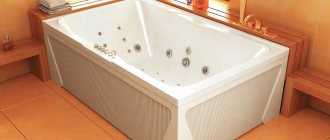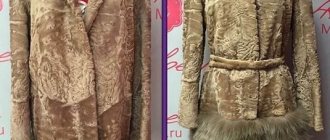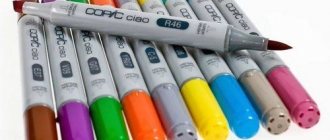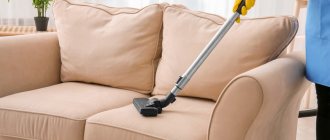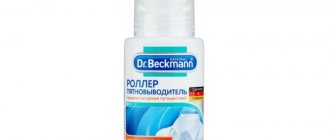Over time, the question: how to clean a bathtub from yellow deposits at home is becoming more and more relevant. Many surfaces suffer from this problem, and even the high price and seemingly high quality of materials do not always help.
Water is primarily to blame for the appearance of yellow plaque. Sooner or later, poor quality water, which may contain various impurities and even chlorine, will leave its mark on the surface of the bath. The second reason for the appearance of plaque is insufficient care. The bathtub should be washed regularly and only specialized products should be used for this.
Preparing the bath for cleaning
Before you start cleaning the bathtub, you need to find out what it is made of so as not to make an irreparable mistake.
- It is the material of manufacture that is very important in the choice of cleaning products. What is suitable for one bath may not be suitable for another.
- Under no circumstances should you use brushes with hard bristles, namely metal ones. Small cracks that remain after such cleaning will lead to the appearance of larger ones in the future. Even if you manage to clean the bathtub white in this way, you will most likely end up shortening its service life. The process of coating destruction will begin.
- It is not recommended to use cleaning products that contain sebaceous acids, especially if the bathtub is made of acrylic.
- Be sure to rinse the surface with warm water after each bath to wash away traces of soap and shampoo.
Cleaning features depending on the type of coating
Modern bathtubs can be made of cast iron, steel, and acrylic. In most cases, metal bowls are coated with enamel, which requires careful handling during operation and cleaning.
Cast iron
It is advisable to wash bathtubs made of this alloy once a week. For normal hygiene procedures, use laundry soap or gel detergent . Cast iron bowls can be cleaned with weak acids (acetic, citric).
Acrylic
To maintain whiteness, it is recommended to clean plastic bathtubs with special products no more than once every 10-14 days. For such baths, it is advisable to purchase gels and foams designed specifically for acrylic products.
Do not rub the polymer plastic bowl . Preventive washing is carried out using washing gel or washing powder.
Steel
Bowls made of stainless steel, like cast iron, are covered with enamel.
However, this layer is thinner and therefore more sensitive to the effects of cleaning agents. For bleaching, it is recommended to use soft equipment (napkins, sponges, rags) and gentle products. It can be:
- weak acids;
- baking soda;
- ammonia;
- hydrogen peroxide.
Enameled
The glossy coating on the metal bowl requires regular washing, but special cleaning is carried out no more than once every 7 days. It is recommended to avoid strong acidic and chlorine-containing compounds, as their use can cause irreversible yellowing of the surface.
How to clean a cast iron bathtub?
In old apartments that have not been renovated for a long time, you can find a cast iron bathtub. Previously, they were used everywhere, and still, many families prefer this material. Old cast iron bathtubs were distinguished by the fact that over time, dirt clogged into the cracks that formed. Nowadays they are made from more modern materials, which has made them more practical. The latest generation cast iron bathtubs are coated with a special composition that is not afraid of temperature changes and, therefore, the appearance of cracks can be avoided.
In a household chemical store, you can purchase any oxygen-containing product to clean a cast-iron bathtub from stubborn dirt. However, many formulations can be prepared at home, which will significantly save the family budget.
Special powders
To clean a cast iron bathtub from yellowness, you can use regular laundry detergent.
- a small amount of powder is applied to the surface of the bath;
- Using a brush dipped in water, the applied powder is brought to a foam state and left in this state for 15-20 minutes;
- after time, the applied composition is washed off with warm water;
- If there is heavy dirt on the surface, you can remove it with a brush.
Soda ash mixed with baking soda
A mixture of soda ash and baking soda works well to remove yellowness on the surface of the bathtub.
- In a small container, two bulk substances are mixed in equal proportions.
- The bath is doused with warm water to wet the surface.
- Sprinkle soda mixture on top.
- Half an hour after application, the surface of the bath is treated with a solution of vinegar and bleach and left for 50 minutes.
- After time, the composition is washed off with warm water.
- To make the surface shiny, it must be thoroughly wiped with a woolen rag.
Ammonia
You can get rid of traces of yellowness by preparing the following cleaning solution.
- in a container, mix one tablespoon of baking soda and one teaspoon of ammonia;
- Using a sponge or brush, apply the prepared mixture to the entire surface of the bath and leave for half an hour;
- When the allotted time is over, rinse off the applied solution with warm water.
Using this prepared solution, you can wash even stubborn stains.
Soda with bleach
Strong and old traces of yellowness can be easily removed using the following solution:
- In a small container, mix baking soda and any bleach in equal proportions.
- The prepared solution is applied to the surface and left for 40-50 minutes.
- After time, the mixture is removed with a stream of warm water. No additional manipulations are required, since all the dirt easily comes off on its own.
How to remove yellowness using improvised means?
Traditional methods help to cope with yellowness no worse than store-bought bleaches.
Soda and peroxide
Sodium bicarbonate has good cleaning properties.
To speed up and enhance cleaning, it is recommended to use hydrogen peroxide together with soda. The algorithm for using this tool is simple:
- Baking soda and peroxide are mixed in a 2:1 ratio.
- Apply the paste to the yellow spots.
- Leave the product on the walls for about an hour.
- Rub all problem areas with a sponge.
If the yellow coating is old and thick, then repeat the cleaning with soda and peroxide.
Lemon acid
The crystalline powder, used in cooking, is also known as an effective anti-rust agent. remove yellow and orange stains using this organic acid as follows:
- Dissolve 25 g of powder in a glass of water.
- Apply the solution with a sponge to the stains.
- Leave for half an hour.
- Repeat acid treatment 4 more times.
Soda and laundry soap
This recipe helps to cope with a small light yellow coating. The removal procedure includes several steps:
- grate the laundry soap and pour in a little water;
- add baking soda to the dissolved soap mass;
- Rub the problem areas with soap and soda slurry with a sponge;
- leave the product for a while;
- Rub the stain again with a sponge.
Peroxide and ammonia
Both products are not in short supply and are easy to purchase at the pharmacy.
Discoloration of yellow spots is carried out in this order:
- hydrogen peroxide and ammonia are mixed in a ratio of 1:2;
- pour the prepared solution onto the yellow stains;
- wait about a quarter of an hour;
- wipe the bath with a sponge or cloth;
- If necessary, the treatment is repeated.
Acetic acid
To work, you need 9% table vinegar. If the contamination is weak, you can limit yourself to a weaker solution.
Cleaning is carried out as follows:
- Soak a cloth selected according to the size of the stain in vinegar.
- Apply a “compress” to the contaminated area.
- Wait 1-2 hours until the yellowness is completely discolored.
- To prevent the napkin from drying out, it is periodically moistened with vinegar.
If the entire bath is covered with yellowness, then warm water is poured into it, 1-2 liters of vinegar are added and left for 10-12 hours.
Liquid detergents
You can remove yellow marks from a steel bathtub using various detergents. The main condition is the absence of aggressive components in the composition. Even mild stains can be removed with dishwashing detergent.
- the substance is applied to the surface of the bath, foamed with a sponge and left for half an hour;
- After the allotted time, the product is washed off with warm water.
Lightly ingrained stains can be removed using quite ordinary means; it is not necessary to use strong chemicals for this.
What types of bath stains are there?
The most common types of contaminants that require timely cleaning are:
- old soap scum;
- limescale;
- rusty streaks from excess iron in the water;
- color dyeing of various origins;
- black mold;
- construction dirt.
Since rusty and yellow stains are the most difficult to remove, we will consider all known methods for cleaning bathtubs made of various materials.
Soda
You can remove traces of water and rust using soda, and both regular food soda and soda ash cope equally well with the task.
- Soda is applied to the wet surface of the bath.
- A few minutes after application, it can be washed off with warm water, as it begins to act very quickly.
If there are old stains on the surface of the bath, then the exposure time of the soda can be increased to 15-20 minutes, after which it should be washed off with water.
Useful tips
To remove yellowness and further maintain the cleanliness of the font, it is important to remember the following useful recommendations:
After each use, rinse the bathtub with warm water, then wipe dry with a soft cloth.- When using any plumbing product, it is advisable to wear gloves to protect your skin from irritation.
- Before removing yellow stains using household chemicals, you need to turn on the forced exhaust in the bathroom.
- The final stage of any cleansing with a special product is rinsing the bath with water and wiping dry with a napkin.
- You should not place metal cans and bottles on the sides of the bathtub, as they may leave rust marks.
- It is necessary to keep the faucet in good condition, since constantly dripping or flowing water leaves a persistent smudge.
All the most important and useful information about cleaning the bathroom is collected in this section of the site.
What to use when cleaning an enamel bathtub?
The most popular bathtub model has an enamel coating. They, as a rule, serve well and for a long time, are not afraid of high temperatures and are easy and quick to clean. It is for this large list of positive qualities that many families choose them.
An enamel bathtub does not tolerate cleaning with rough brushes, and in the household chemicals store you can find special aerosols that will extend the life of the surface. If serious stains appear on the bathtub, it is recommended to use non-hard sponges to wipe them off.
But you can prepare a product that can be used to clean the surface at home.
Baking soda
Traces of yellowness are easily removed from the surface of an enameled bathtub using soda.
- The bath is pre-drenched with warm water.
- Baking soda is applied on top and left for 10-15 minutes.
- After the allotted time, the soda is washed off with warm water.
- If the desired result was not achieved the first time, the procedure can be repeated.
Citric acid
To remove contaminants, you can use a concentrated solution of citric acid.
- the granular substance dissolves in water;
- using a sponge, apply to the surface of the bath and leave for 20-30 minutes;
- When the time is up, the surface is additionally wiped with a sponge, after which the solution is washed off with warm water.
One procedure, as a rule, is enough to return the bathtub to its previous appearance.
A solution of laundry soap with ammonia
If you have severely ingrained yellow marks on your favorite bathtub, you can prepare the following cleaning solution to remove them.
- Rub laundry soap into a glass of clean water and stir thoroughly until completely dissolved.
- 4-5 drops of ammonia are added to the liquid and everything is mixed.
- Use a sponge soaked in the prepared solution to walk over the entire surface of the bath, paying special attention to heavily soiled areas.
- 15 minutes after application, the bath is doused with warm water.
Additional manipulations are not required, since the dirt is easily washed off along with the solution.
Detergent sanitary products
You can use the same products to clean the bathtub as you use for the sink and stove. It is desirable that it has a gel consistency. The product is applied to the surface of the bath and left for 15-20 minutes. After time, especially dirty areas should be wiped with a sponge to achieve maximum results. Finally, the product is washed off with warm water.
How to remove stains with special compounds?
The assortment of hardware stores offers many special gels, liquids, powders against rust or limescale.
Cleaners differ:
Unicum
The sanitary ware is intended for cleaning the bathroom. The spray is suitable for:
The formula of the product includes a mixture of organic acids, nonionic surfactants and fragrance.
Use the liquid according to the instructions:
- Spray the spray onto the bath from a distance of 20-25 cm.
- Maintain a full reaction time of 15-20 seconds.
- Wipe the area with a soft brush or cloth.
- Persistent stains are re-treated with exposure for up to 1 minute.
A 500 ml spray bottle costs an average of 500 rubles.
Mr. Chister
Acrylic bathtub cleaner helps remove:
Gives the surface shine, suitable for frequent washing:
- enameled,
- ceramic,
- acrylic,
- steel surfaces.
Includes:
- NSAS,
- lemon acid,
- antibacterial component,
- fragrance,
- preservative
Cleaning of plumbing equipment is carried out according to the following scheme:
- The spray is sprayed onto the contaminated area.
- Allow the product to react for 2-3 minutes.
- With strong yellowness, the exposure time is increased.
- Wipe the treated area with a sponge or rag.
The average price for a standard 500 ml bottle is 160 rubles.
Bagi Acrilan
A universal remedy for rust, lime and fungus. Foam spray whitens and disinfects the surface of plumbing fixtures from:
The active ingredients are nonionic surfactants, citric acid and solvents.
Instructions for use require compliance with the following rules:
- Shake the bottle of foam well.
- Moisten the surface to be treated with water.
- Spray Acrylan evenly onto the stains.
- Leave the product for 1-2 minutes.
- Wipe with a damp cloth or rinse with water.
How to clean an acrylic bathtub?
When choosing an acrylic bathtub, you should remember that caring for them is the most difficult. To clean them, you cannot use hard brushes, aggressive chemicals or abrasives. Failure to follow the recommendations will result in the bath becoming unusable.
What should you strictly not use?
An acrylic bathtub is very demanding to maintain. In order not to lead to the fact that it will have to be replaced, you should remember once and for all what products should absolutely not be used to clean it:
- Ammonia.
- Acetone.
- Formaldehyde.
- Chlorine-containing substances.
- Abrasive substances.
At the same time, if you decide to give preference to an acrylic bathtub, then it is better to immediately choose the most durable model. So, on the market you can find two types of bathtubs: with acrylic coating and made of acrylic sheets. The former are very susceptible to cracks, so caring for them becomes a whole problem. While the latter are much stronger.
Chemical solution
If yellow stains appear on the acrylic bathtub, then there is no need to experiment too much. To clean them, it is best to use specialized products:
- acrylan is a chemical product specially created for cleaning acrylic bathtubs. Its soft composition does not damage the delicate surface and allows the bath to last as long as possible. You can purchase this product at any household chemical store;
- Bass is a cleaner for acrylic surfaces. Great for both bathtubs and showers;
- hyphae is a universal bathroom cleaner, suitable for acrylic surfaces.
An important condition for using chemicals is that they must be washed off especially carefully and only with warm water.
To ensure that your bathtub always looks like new, be sure to treat it with a special polishing compound after cleaning.
Video: how to clean a bathtub from yellow deposits at home?
Prevention
To prevent bathroom fixtures from turning yellow, proper care will help:
- Clean the bathroom after every use. To do this, rinse it with running water and wipe it with a cloth or melamine sponge.
- Carry out preventative cleaning once a week using disinfectants.
- Do not leave metal objects (machines, brushes, etc.) in the bathtub or on its sides; when exposed to moisture, they undergo corrosive processes and leave yellow marks on the surface.
- Replace the old sewer system with a plastic one. Invite a plumber to carry out the work.
- If you can’t clean the old bathtub, the only way out is restoration (specialists can re-enamel the plumbing fixtures).
To maintain the cleanliness of the bathtub and extend its service life, regularly carry out preventative cleaning, rinse and wipe the surface after each bath.
Yellow deposits on a bathtub are unsightly and can cause permanent damage to the surface. To avoid problems, ensure proper and timely care of plumbing fixtures, monitor the condition of pipes and the quality of tap water, and do not forget about general and preventive cleaning.
